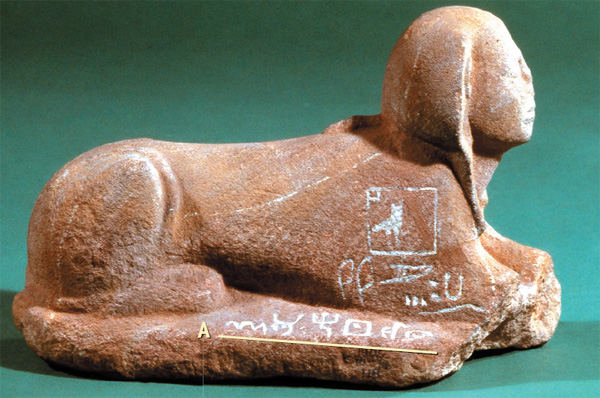Image Details

© The Trustees of the British Museum
THE RIDDLE OF THE SPHINX. This 10-inch-long sphinx fashioned from sandstone proved to be the key to deciphering the Proto-Sinaitic script. It was discovered by Petrie amid the ruins of Serabit’s Hathor temple and includes dedicatory inscriptions on both sides of the base (underlined in yellow in the photo above) and on the right shoulder. Both inscriptions on the base are written in the Proto-Sinaitic alphabetic script. The inscription on the right shoulder is written in Egyptian hieroglyphs, The hieroglyphic text identifies the name of the goddess to whom the sphinx is dedicated as Hathor, “the mistress of turquoise.” The famous Egyptologist Alan Gardiner observed that each of the signs in the Proto-Sinaitic texts represented not an entire word, as in hieroglyphic, but only its initial sound. Four of these strange signs (written left-to-right) spelled the name Baalat, a Canaanite word also meaning “the Mistress.” Thus was Gardiner able to translate Baalat, the first word deciphered in alphabetic script.
